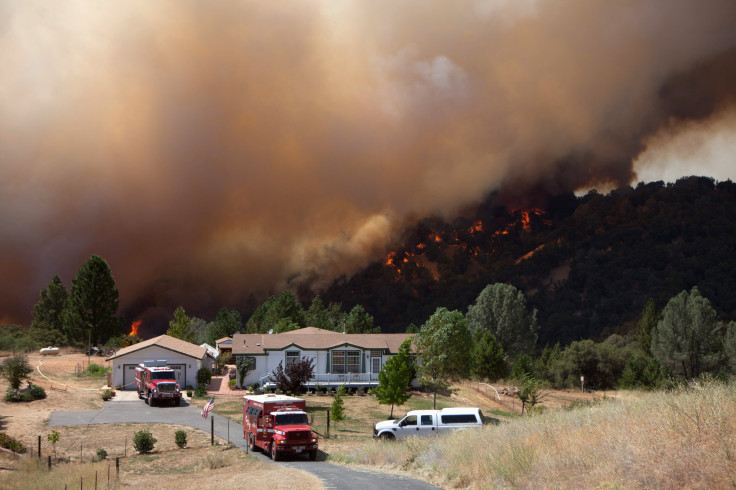Wildfires And 'Biomass Burning' Are Bigger Climate Change Threats Than Previously Thought, Stanford Study Says

Nearly one-fifth of the carbon dioxide emissions caused by humans can be traced back to wildfires, slash-and-burn agriculture and the burning of wood waste to produce power, a Stanford University report found. While “biomass burning” has long been considered a culprit of climate change, the new research is the first to comprehensively quantify that threat -- and the number suggests the risks may be higher than previously thought.
About 18 percent of all human-made carbon dioxide emissions -- or nearly 8.5 billion tons each year -- comes from the burning of forests, savannahs and wood chips for fuel, said Mark Jacobson, a civil and environmental engineering professor at Stanford and the study's main author. The remaining 39 billion tons of annual human-made CO2 emissions come from other activities like burning fossil fuels in power plants and vehicles and producing concrete.
Jacobson’s research, out this week in the Journal of Geophysical Research: Atmospheres, is based on 3-D computer model simulations of the impacts of biomass burning. The models found that soot and smoke from smoldering plants and trees also poses a greater threat to public health than initially understood.
“We calculate that 5 to 10 percent of worldwide air pollution mortalities are due to biomass burning,” Jacobson said in a statement. “That means that it causes the premature deaths of about 250,000 people each year.”
The study also calls out an uncomfortable reality for biomass energy proponents, who argue that burning grasses and waste wood to produce energy and heat homes is a cleaner, more sustainable alternative to fossil fuels. In the United States, wood and wood-derived fuels accounted for nearly 40 million megawatt-hours of electricity generation in 2013, just under 1 percent of the U.S. annual total, according to federal energy data.
“The bottom line is that biomass burning is neither clean nor climate-neutral,” Jacobson said. “If you’re serious about addressing global warming, you have to deal with biomass burning as well.”
According to his research, biomass burning has other impacts that increase warming in the atmosphere, beyond just producing greenhouse gas emissions. The process also creates tiny bits of soot, called black carbon, and traces of harmful substances, known as brown carbon, which together cause more global warming per unit weight than other human-associated carbon sources.
Jacobson explained that black and brown carbon particles can boost warming in three ways. First, they enter the water droplets that form clouds, where they bathe in sunshine and absorb the light energy. The particles in turn create heat, and the water droplets evaporate at a faster pace. A second way is that carbon particles can float around in the spaces between water droplets, similarly absorbing sunlight and converting it to heat.
Clouds dissipate as a result, and the natural shield they provide between the sun and the planet disappears, so that more sunlight reaches the ground and oceans -- and thus warms land and air temperatures.
Third, biomass-related carbon particles can settle on snow and ice, absorbing the sunlight and causing the frigid surfaces to melt at accelerated rates, exposing dark soil and dark seas. These, too, absorb even more energy from the sun, amplifying the rate of warming.
Put together, all of the warming caused by biomass-related CO2 emissions and black and brown carbon particles creates a planetary warming effect of 2 degrees Celsius (35.6 degrees Fahrenheit) over the two-decade period simulated by the computer. Some of that is offset by light-colored particles, so that the total net warming effect is closer to 0.4 degrees Celsius.
A fraction of that net amount -- about 7 percent -- comes from actual burning. Direct heat created by wildfires and slash-and-burn agriculture similarly causes clouds to evaporate and reduces relative humidity, increasing the sun’s penetration and raising temperatures.
Making things worse, wildfires will likely become more frequent and intense in the coming decades as climate change exacerbates drought conditions around the world. In this vicious feedback loop, air pollution will also increase. “As the rate of biomass burning increases, so do the impacts to human health,” Jacobson said.
© Copyright IBTimes 2024. All rights reserved.











